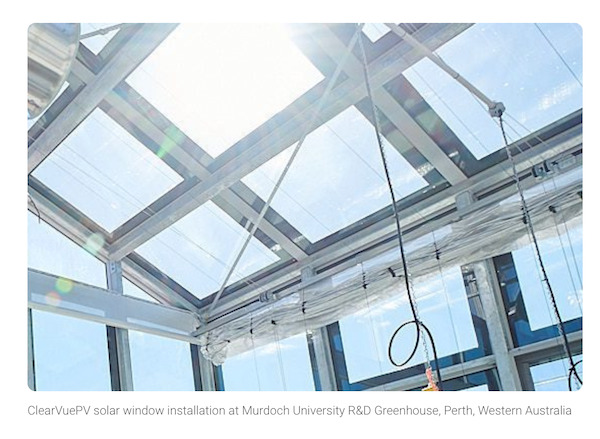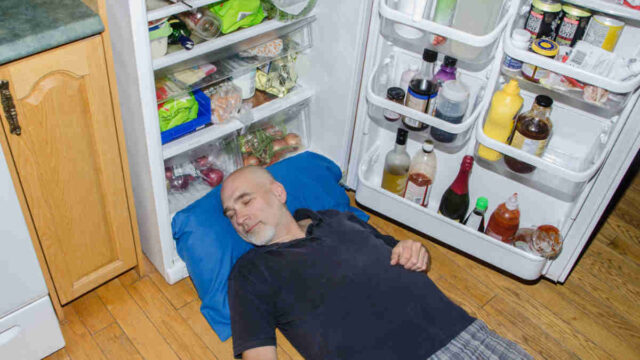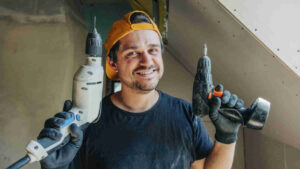- COP28’s Global Cooling Pledge is aimed at reducing cooling-related emissions
- Smart buildings that can conserve energy have become a focus
- ASX-listed ClearVue has the technology to both generate electricity and conserve energy in buildings
On Tuesday, the UN launched the Global Cooling Pledge at COP28, signed by 63 countries, including Australia.
The Pledge aims to raise international cooperation to reduce cooling-related emissions by 2050, and increase the global average efficiency of new air conditioners by 50%.
The countries that have signed the Pledge will commit to reducing cooling emissions by 68% by 2050, saving $17 trillion in energy costs and eliminating billions of tonnes of CO2.
Sam Ringwaldt, the CEO of Conry Tech, a climate tech company, says extreme heat is a killer, and as the climate crisis worsens, cooling is rapidly becoming indispensable in even more parts of the world.
“We need to ensure that widespread cooling uptake in developing nations doesn’t heat our environment further and make the planet unliveable,” said Ringwaldt.
This year’s COP was the first event to address the staggering global energy use and emissions of cooling beyond refrigerants. And although 63 signatories represents a strong start, it’s unfortunate that India and China – the two biggest countries in the world – are not expected to sign.
“This is major blow to the UN’s global cooling ambitions,” says Ringwaldt.
“For hot developing countries with millions or billions citizens desperately seeking access to cooling, the pledge is not fit for purpose.
“They believe they cannot decrease net cooling emissions by 2050 given their current low cooling uptake. They have also baulked at the perceived financial costs of installing modern, more energy efficient cooling technologies.”
Addressing cooling emissions not an option
Ringwaldt added that access to affordable efficient cooling needs to be a stronger focus in the Pledge.
“We cannot rely on G20 nations upgrading while everyone else adopts inefficient systems.
“Governments should be providing support to companies developing tech in this space, as it will save huge expenditure on grid upgrades as removing air con demand frees up energy for all the other sectors that are electrifying,” he added.
Meanwhile, the biggest adopters of cooling today, such as the US and Australia, cannot possibly meet their net zero targets if they do not address cooling emissions.
“In Australia, cooling consumes 25% of all electricity generated in the country and, in the summer months, puts immense strain on the grid.
“In 2019, extreme summer energy use contributed to blackouts in Victoria. We urgently need to reduce cooling electricity use and associated emissions,” Ringwaldt said.
It’s all about building design
AIRAH, which is the peak body representing the HVAC&R (Heating, Ventilation, Air Conditioning, and Refrigeration) industry in Australia, has advocated to the federal government for a National Cooling Action Plan.
AIRAH’s new CEO, Sami Zheng, said the HVAC&R sector uses almost a quarter of Australia’s generated electricity, and contributes about 12% of our greenhouse gas emissions, so it warrants special attention.
“A combination of market factors and climate requirements has seen us become one of world’s biggest and earliest adopters of air-to-air heat pumps, such as split systems,” Zheng said.
“We are also at the front of the line when it comes to electrifying the built environment. And we will be dealing with extreme weather more than most other countries.”
Zheng added that there are lots of ways Australia can reduce its cooling emissions. And many of these are not about new technology.
“Good passive design and quality building envelopes are the starting points – if you can minimise cooling and heating loads, you won’t need to rely so heavily on cooling and heating equipment,” Zheng said.
Maintaining equipment can also make a huge difference to its performance and longevity, she added.
“Moreover, unlike other sectors, such as manufacturing, we have the technology to decarbonise now.
“HVAC&R and the whole built environment must get to net zero well before 2050 to compensate for the harder-to-abate parts of our economy,” Zheng said.
ClearVue’s glass technology
The debate has turned the spotlight on how to integrate solar energy into building design and reduce energy costs.
Solar energy, as we know, has long been utilised for heating and cooling in vernacular architecture, which is designed to harness or shield from the sun’s energy. But new technologies are now desperately needed on a commercial scale.
Western Australia-based ClearVue Technologies (ASX:CPV) is one Aussie company with a novel technology that enables windows on buildings to generate electricity.
The company’s patented glass technology sits within an activated interlayer between two panes of glass, and reduces energy use in a building.
It uses nano and micro particle technology to internally diffuse, redistribute, and reflect elements of the incoming light towards the edges of the glass panel, where it is collected by mono-crystalline silicon-based PV modules.
The PV modules are placed into a circuit, which is optimised to harvest energy rays coming from multiple directions (even when cloudy).
The company has been granted over 200 patents across the world for the technology.

Speaking to Stockhead, ClearVue’s CEO Martin Dial said the company’s technology not only generates electricity, but it also conserves energy.
“We harvest electricity, but at the same time, we also conserve electricity because if you imagine, some of the sun radiation, particularly the infrared, which is the warm part of the rays, we don’t let them into the buildings.
“So buildings equipped with our technology will have reduced cooling load,” Deil told Stokchead.
“And because of that, you need less power to drive the air conditioning units, which obviously provides building owners a tangible path to net zero buildings.”
‘It’s a matter of must’
ClearVue’s window technology has been applied for use in the building and construction, as well agricultural industries.
In September, the company demonstrated that its Second Generation integrated glazing unit (IGU) design can be produced at mass-scale on an unmodified industry-standard production line, confirming the commercial viability of the product.
“We now have proven ability to scale our innovative smart building solutions,” said Deil.
“This scalability now proves that our units can be produced at very high volume with very little time added, which makes it a commercially viable product.”
In terms of the payback period, Deil says its clients will usually break even from their investment starting anywhere between three years to 15 years.
“But in the long run, it’s not a matter of just these commercial aspects. These buildings will have to be net zero, by regulations.
“And we obviously have one of the solutions to enable developers to arrive at these goals that are set by the policy makers, and it won’t be a matter of option. It’s a matter of must,” said Deil.
Read more: Which major climate conference is turning into a circus this week
The views, information, or opinions expressed in the interview in this article are solely those of the interviewee and do not represent the views of Stockhead.
Stockhead has not provided, endorsed or otherwise assumed responsibility for any financial product advice contained in this article.
Read MoreTech











